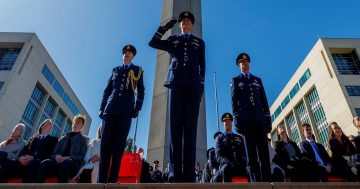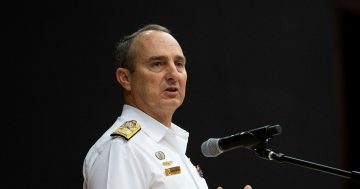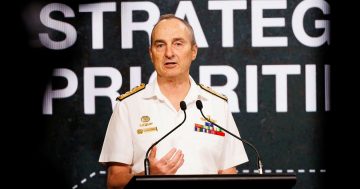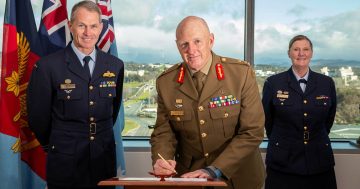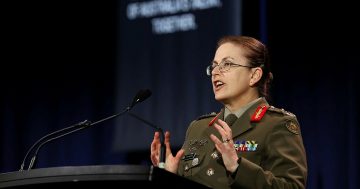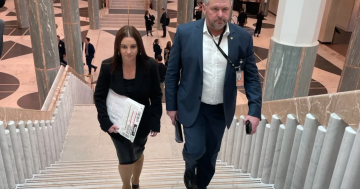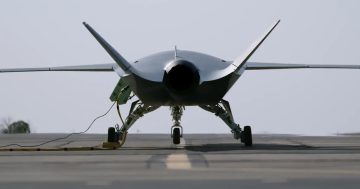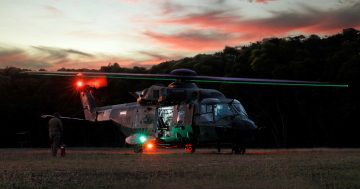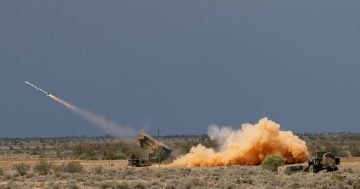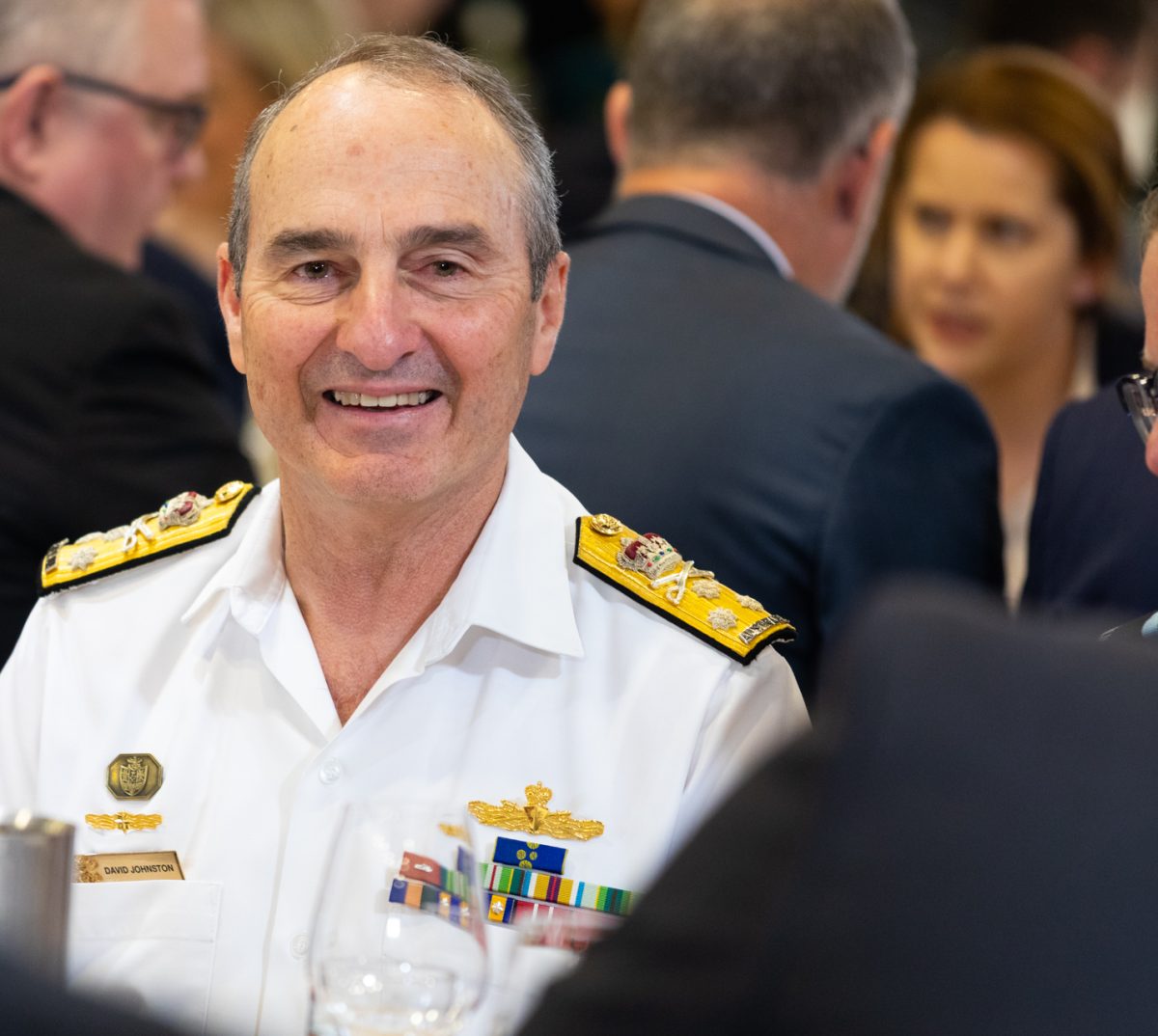
Admiral David Johnston is the new Chief of Defence Force, promoted from Vice Admiral. Photo: Michelle Kroll.
Command of the Australian Defence Force transferred from General Angus Campbell to Admiral David Johnston during a ceremonial parade in Canberra this week.
General Campbell concluded his duties with the ADF on Wednesday (10 July).
“It has been an honour and privilege to be the Chief of the Defence Force. But I am even more proud of Defence – who we are and what we are achieving,” he said.
“I wish to acknowledge the men and women of all ranks, musters and services who wear our nation’s uniform.
“Whether for a year or half a century, your service is deeply appreciated and of consequence to the future security, wellbeing and prosperity of Australia and its people.”
Admiral Johnston is the first Navy CDF for more than two decades, after a succession of Army and Air Force chiefs.
He joined the Royal Australian Navy in 1978 and held the position of Vice Commander of Defence Force since 2018.
He brings extensive experience to his new position, from senior operational roles in the Joint Force to interagency appointments that have engaged the ADF at home and across the globe.
As former Vice Chief of the Defence Force, Admiral Johnston holds deep strategic awareness of Australia’s national security challenges and the requirements to take the ADF forward.
“I pay tribute to General Campbell for his determined focus on building a better ADF, and his personal example and demonstration of leadership during a challenging period for the Australian Defence Force,” Admiral Johnston said.
“It has been well stated that we find ourselves in increasingly challenging strategic circumstances. This places a great responsibility on Defence to be ready to meet our nation’s security needs.
“This requires a force that is well equipped, trained, confident, strong and resilient.”
Admiral Johnston recognised the ADF workforce was his priority.
“I am very conscious of the responsibility I have to the extraordinary men and women serving in the ADF, our veterans, and the families who support us,” he said.
“It is a great honour to be in your service and I commit to giving you my all, every day, as your CDF.”
Admiral Johnston, who handed the responsibility of Vice Chief of the Australian Defence Force to Air Marshal Rob Chipman on 9 July, praised his team’s work on the 2024 National Defence Strategy and the rebuilt Integrated Investment Program.
“There are simply too many achievements to call out individually now but I want you to know that as the Vice Chief and your group head, I have been extremely proud of how you have continued to deliver this critical work,” he said.
“It has been my distinct privilege to lead you.”
Air Marshal Chipman described his new role as a “profound responsibility” which he accepted with “humility and resolve”.
“I come into the role at a pivotal time in our history, when the international system that has underpinned Australia’s security and prosperity for almost 80 years is under intense pressure, and when the scope and scale of investment in military technology is simultaneously unsettling and imperative,” he said.
“Our assumptions and expectations are being challenged and contested.”
As reported in Region, the Federal Government announced the new appointments in April, flagging the handing over of the chiefs of the Royal Australian Air Force, Joint Capabilities Group and Joint Operations Command.
Last week, Air Marshall Chipman handed over command of the RAAF to Air Marshall Stephen Chappell at a parade at Russell Hill’s Blamey Square witnessed by about a thousand RAAF personnel and more than 500 ADF and contractor civilians.
Air Marshall Chipman handed over the chief’s ceremonial sword and signed the transfer of command before the assembled personnel saluted him.
He was then farewelled by a spectacular flypast of two RAAF Lockheed Martin F-35As and two Boeing F/A-18F Super Hornets in a tight mixed formation that had flown over Parliament House and up Kings Avenue.
The Chief of Army (CA), Lieutenant General Simon Stuart and Chief of Navy (CN) Vice-Admiral Mark Hammond will remain in their current roles for a further two years.
Chief of Joint Operations (CJOPS), Lieutenant General Greg Bilton retired and was replaced by his deputy, Rear Admiral Justin Jones, who was promoted to Vice-Admiral.
Chief of Joint Capabilities (CJC), Lieutenant General John Frewen also retired, replaced by the Commander of Army’s Forces Command, Major General Susan Coyle, who was promoted to Lieutenant General.
The Chief of Defence Intelligence, Lieutenant General Gavan Reynolds, will also retire. He will be replaced by a civilian appointment to be named.












